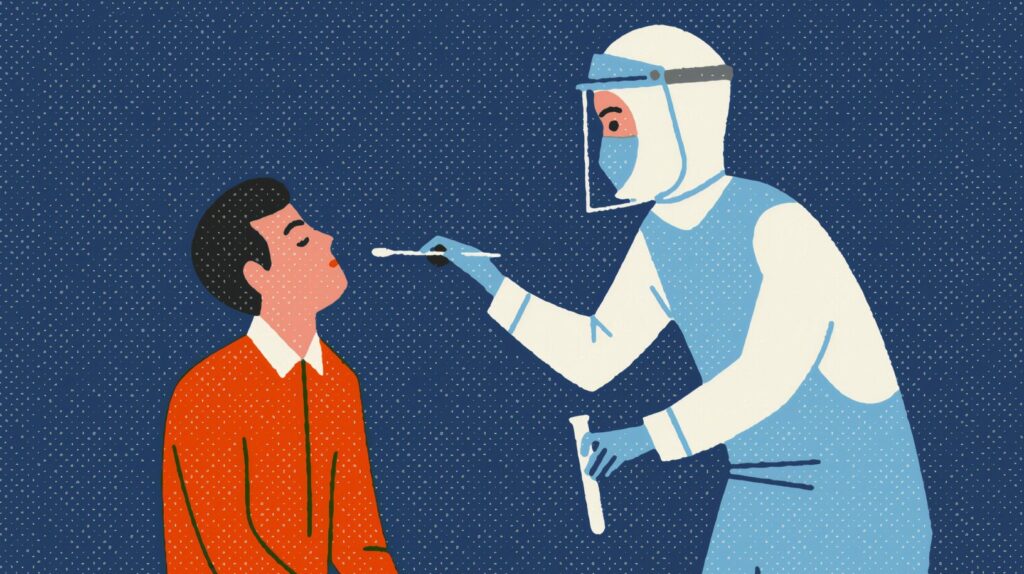A recent research conducted by the researchers of Memorial Sloan Kettering Cancer Center (MSK) have found that SARS-CoV-2 genetic material can be consistently detected in self-collected saliva samples at a rate almost like that of nasopharyngeal and oropharyngeal swabs.
According to a new study published by Elsevier in The Journal of Molecular Diagnostics, the rate of detection using saliva samples was similar across different testing platforms. The saliva samples remained stable for up to 24 hours when stored with ice packs or at room temperature.
Oral rinses, which are suggested as another alternative to nasal swab collection, didn’t reliably diagnose COVID-19, the reports say.
“The current pandemic has placed a significant strain on the supply chain, from swabs to the personal protective equipment (PPE) healthcare workers need to safely collect samples,” said lead investigator Esther Babady, PhD, D(ABMM), FIDSA, director of the Clinical Microbiology Service at Memorial Sloan Kettering Cancer Center, New York, NY, USA.
ALSO READ| New COVID-19 Test Use Sensor To Rapidly Detect Coronavirus
“The use of self-collected saliva has the potential to minimize healthcare worker exposure and decrease the need for specialised collection devices, such as swabs and viral transport media,” added Babady.
At the peak of the regional outbreak between April 4 and May 11, 2020 at MSK in New York City, a study was conducted in which study participants were 285 MSK employees who needed to be tested for COVID-19 because that they had symptoms of the virus or had been exposed to someone who had the virus.
Each participant provided paired samples: a nasopharyngeal swab and oral rinse; a nasopharyngeal swab and a saliva sample; or an oropharyngeal swab and a saliva sample. All samples to be tested were stocked up at room temperature and was transported to the laboratory within two hours.
The agreement between the saliva test and the oropharyngeal swab was 93 per cent, with a sensitivity of 96.7 per cent. In comparison with the nasopharyngeal swab, the agreement of the saliva test was 97.7 per cent, with a sensitivity of 94.1 per cent, according to the data recorded.
Oral rinses were only 63 per cent effective in detecting the virus, with an overall agreement with nasopharyngeal swab of only 85.7 per cent.
To test for stability, saliva samples and nasopharyngeal samples with a variety of viral loads were stored during a transport cooler at 4° C or at temperature. No significant difference in virus concentration was detected in any samples at the time of collection, eight hours later, and 24 hours later.
These results were validated on two commercial SARS-CoV-2 PCR platforms, and overall agreement between the various testing platforms was over 90 percent.
ALSO READ| Covid-19 Test Punctured Woman’s Brain Lining and Leaked Brain Fluid From Her Nose
Dr. Babady noted that validation of sample self-collection methods holds great promise for broad testing strategies that might mitigate infection risk and PPE resource utilization.
“The current ‘test, track, and trace’ public health approach to surveillance relies heavily on testing for both diagnosis and surveillance. The use of self-collected saliva provides a less expensive and fewer invasive option for viable sample collection. It’s certainly easier to spit in a cup twice every week than undergoing frequent nasopharyngeal swabs,” she stated.
“This can improve patient compliance and satisfaction particularly for surveillance testing, which needs frequent sample collection. Since we also showed that the virus was stable at temperature for a minimum of 24 hours, saliva collection has potential to be used reception ,” she added.

